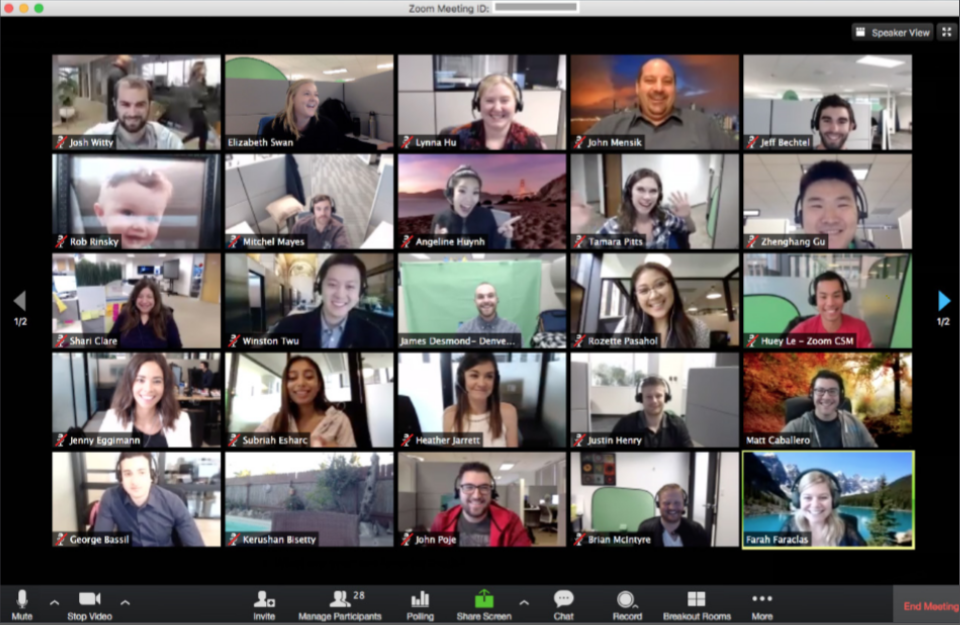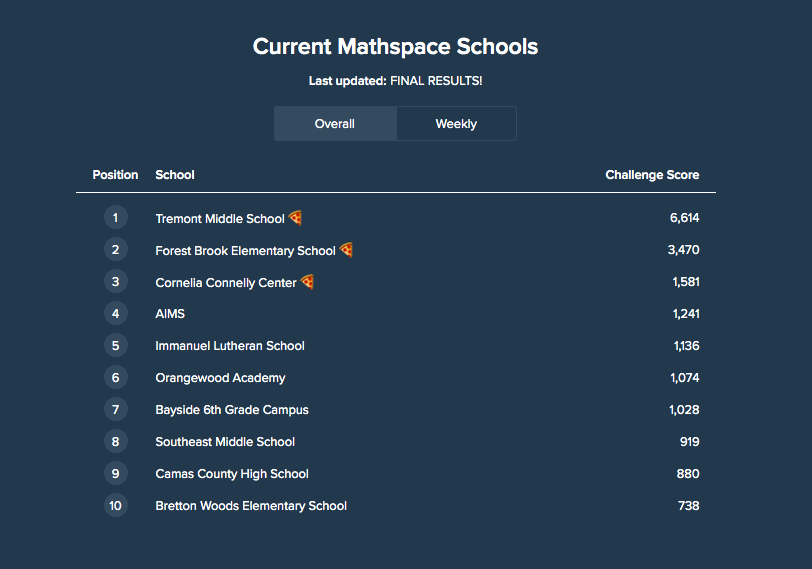5 ways to build community whilst students are learning from home

This week teachers around the globe are asking the question, “How can I use technology to engage my students in meaningful learning opportunities whilst they are at home?”
Creating a community of learners is no easy task, even within the context of a conventional classroom. Whilst we could view our current circumstances as yet another roadblock to building community, we can also choose to see it as a new opportunity for creativity and innovative teaching.
Below are 5 suggestions (from educators) to help you foster classroom community via Mathspace distance learning.
1. Questions Prompts
Intentional question prompts are a powerful way to engage students in collaborative discussion, especially via online learning. Whether you’re teaching on an existing learning platform (such as GoogleClassroom), or using the “Chat” feature on a video conferencing platform (such as Zoom), here are some ideas to consider when posing questions for your students:
Before instruction/learning
Ask students a question prior to maths instruction to tap into prior knowledge and natural curiosity. These initial thoughts and wonderings will act as a formative assessment, giving you insight into students’ existing knowledge, and also serve to engage students in the learning to come.
Examples:
- What do you think of when you hear ________?
- What do you already know about ________?
- What do you wonder about ________?
- What challenges have you faced when ________?
During instruction/learning
During online Mathspace instruction, pause your teaching to pose a question. Invite students to respond in the “chat box” or on the “discussion board” - the great news? Most students are so tech savvy that they’ll be very familiar with this! After a little practice it becomes fun, much like a conversation via text. Students can answer questions, share challenges that they’re having, and even celebrate moments of new learning.
Examples:
- How could you explain ________ in your own words?
- What questions do you have about ________?
- What topics would you like some revision on?
After instruction/learning (reflection, new learning)
After maths instruction, pose a question that fosters reflection of new learning. Once again, this can provide an opportunity for you to formatively monitor student learning. It also will hold students accountable and increase metacognition.
Examples:
- What new information did you learn about ________?
- What questions do you still have about ________?
- How could you explain ________ in your own words?
- On a scale of 1-5, how confident are you feeling about ________?

2. Discussion Boards
Create a space for students to discuss Mathspace content, topics and questions without any evaluative teacher response. Students can post technical or content related questions and help one another without teacher input. This will promote student agency and build relationships among students. Discussion boards also give shy or quiet students a chance to “speak up” and share ideas, often building their confidence and improving interactions with peers.
There are many options when it comes to discussion boards; go with what you're most comfortable with. If you're already using Google Classroom, continue using posts as discussion boards for students. If you're using Zoom for online learning, invite students to engage in discussion using the "Chat Box," visible to all participants. If you've explored using Slack, there are options to create "Channels" (or chats) for each class. Students will also have the option to send you private messages via Google Classroom, Zoom, or Slack. This is one way to cut out email traffic- ask your students to message you via your online learning platform to simplify classroom communication!
Suggestions:
- Set a clear tone and purpose for the discussion board
- Example: “This is a space for you to ask for Mathspace help, support peers, and collaborate as a team.”
- Consider creating a separate “Fun” or “Random” Discussion Board for students to maintain relationships outside of maths learning content
- Example: “This is a space for you to keep in communication with your peers, check-in on one another, and share positive/humorous encouragement.”

3. Pre-Recorded Videos
Pre-record videos for your students. This way, you can share information with multiple classes, prepare for instruction ahead of time, and cut down on planning time in the long run. Try using a video recording platform such as Zoom, or the video feature in Google Classroom.
Consider sharing a Mathspace Textbook lesson page with your students, then talk through the content as you would in a classroom setting. You can also use pre-recorded videos to address common misconceptions, inform students of upcoming tasks, give positive feedback, or simply say hello! Your students love to hear from you. Giving students the option to respond via video can continue to build community among learners.
Suggestions:
- Keep it short, students are more likely to maintain focused attention
- Use “Share Screen” option if you can/when appropriate, this allows students to see your computer screen and hear your voice as an audio recording (A great option if you’d prefer not to be on camera as much!)
- Record a quick “Check-in” video to remind students that you are present in their learning, that you care about them, and that you are monitoring their online activity via Mathspace
- Invite students to respond via video recording (this will further build community)
4. Create a “Class Challenge” or “Year Level Challenge”
Students love competition - create opportunities where your students can work as a team to accomplish a common goal. Leverage technology and Mathspace Data Reports as a way for students to self-monitor their progress and engage in friendly competition as they practise maths skills.
Examples:
- Complete a certain number of Mathspace tasks
- View a set number of lessons
- Earn “Mastery” on a set of tasks (Can encourage team collaboration to support peers)
- Upload a set number of video/photo/written responses to earn points for their team (Encourage creativity!)

Suggestions:
- Set the purpose for your students
- Set a clear timeline for the challenge
- Consider having weekly or fortnightly challenges within your class
- Consider changing teams or student groups regularly
5. Interact with Other Classes
Students today love to engage with their peers, including those that they’ve never met before! Use this opportunity to connect with students in another class, another school site, another city, state, or country.
Do you have friends who are teachers in another place? Know any professors or parents of students who use mathematics in their daily careers? Reach out to people and let them know that your students would love to learn from them, you might be surprised who you connect with!
Suggestions:
- View upcoming topics, scope and sequence of instruction
- Brainstorm friends, colleagues related fields and experts in related content
- Choose a video platform to invite students/experts to (Example: Zoom)
- Collaborate with other teachers - we are in this together!
Example:
- Teaching statistics: assign relevant Mathspace lessons and tasks, provide instruction, invite students to a live video where an outside expert, teacher, student, etc. elaborates on the content and brings it to life for students
How might you connect your class with others to spark new ideas, foster collaboration, and engage students in a new type of community? We would love to hear how you build community whilst your students are learning from home!

